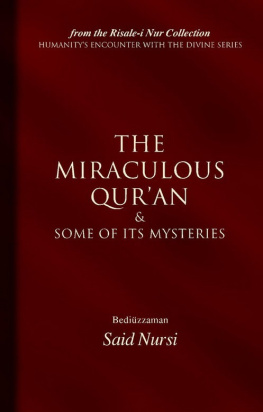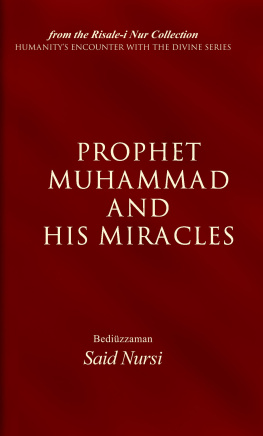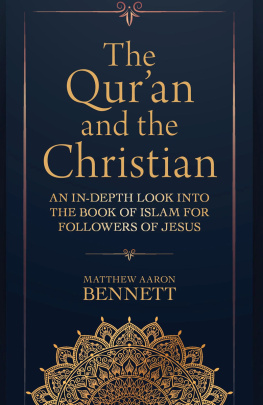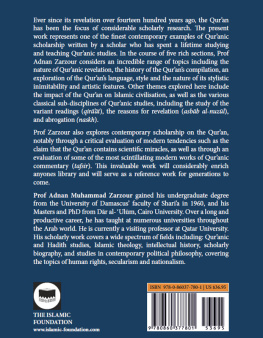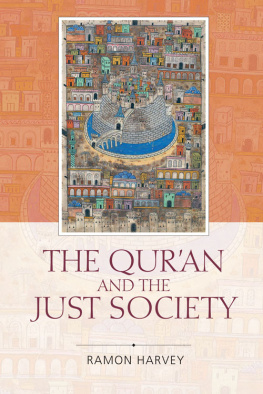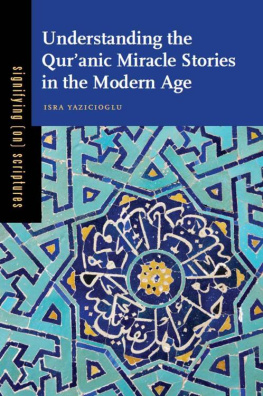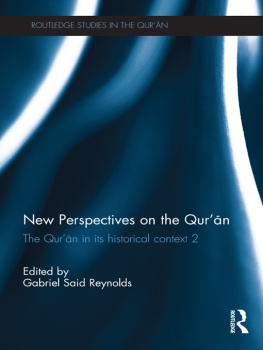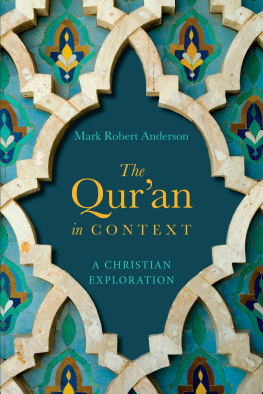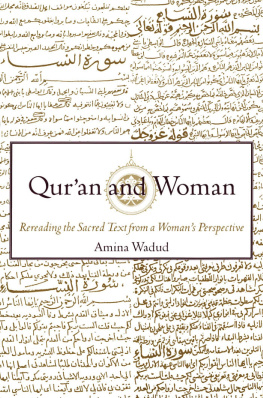Bedizzaman and the Risale-i Nur
In the many dimensions of his lifetime of achieve ment, as well as in his personality and character, Bedizzaman (1877-1960) was and, through his continuing influence, still is an important thinker and writer in the Muslim world. He represented in a most effective and profound way the intellectual, moral and spiritual strengths of Islam, evident in different degrees throughout its fourteen-century history. He lived for eighty-five years. He spent almost all of those years, overflowing with love and ardor for the cause of Islam, in a wise and measured activism based on sound reasoning and in the shade of the Quran and the Prophetic example.
Bedizzaman lived in an age when materialism was at its peak and many crazed after communism, and the world was in great crisis. In that critical period, Bedizzaman pointed people to the source of belief and inculcated in them a strong hope for a collective restoration. At a time when science and philosophy were used to mislead young generations into atheism, and nihilistic attitudes had a wide appeal, at a time when all this was done in the name of civilization, modernization and contemporary thinking and those who tried to resist them were subjected to the cruelest of persecutions, Bedizzaman strove for the overall revival of a whole people, breathing into their minds whatever and spirits whatever is taught in the institu tions of both modern and traditional education and of spiritual training.
Bedizzaman had seen that modern unbelief originated from science and philosophy, not from ignorance as previously. He wrote that nature is the collection of Divine signs and therefore science and religion cannot be conflicting disciplines. Rather, they are two (appar ently) different expressions of the same truth. Minds should be enlightened with sciences, while hearts need to be illumined by religion.
Bedizzaman was not a writer in the usual sense of the word. He wrote his splendid work the Risale-i Nur , a collection exceeding 5,000 pages, because he had a mission: he struggled against the materialistic and atheistic trends of thought fed by science and philosophy and tried to present the truths of Islam to modern minds and hearts of every level of understanding. The Risale-i Nur , a mod ern commentary of the Quran, mainly concentrates on the existence and unity of God, the Resurrection, Prophethood, the Divine Scriptures primarily including the Quran, the invisible realms of existence, Divine Destiny and human itys free will, worship, justice in human life, and humanitys place and duty among the creation.
In order to remove from peoples minds and hearts the accumulated sediment of false beliefs and conceptions and to purify them both intellectually and spiritu ally, Bedizzaman writes forcefully and makes reitera tions. He writes in neither an academic nor a didactic way; rather he appeals to feelings and aims to pour out his thoughts and ideas into peoples hearts and minds in order to awaken them to belief and conviction.
This book is a selected section from the Risale-i Nur collection.
Table of Contents
Revealed Wisdom and Human Thought |
The Quran: Eloquence and Science
|
The Miraculous Quran |
The Quran |
Copyright 2006 by The Light, Inc. & Iik Yayinlari First edition published as The Mysteries of the Quran 2002 Revised Edition 2006 08 07 06 05 2 3 4 5 All rights reserved. No part of this book may be reproduced or transmitted inany form or by any means, electronic or mechanical, including photocopying,recording or by any information storage and retrieval system without permissionin writing from the Publisher. Published by The Light, Inc. 26 Worlds Fair Dr. Suite C Somerset, New Jersey, 08873, USA www.thelightpublishing.com Translated from Turkish by Ali nal Library of Congress Cataloging-in-Publication Data Nursi, Said, 1877-1960. [Risale-i nur. English. Selections] The Mysteries of the Qur'an / Bediuzzaman Said Nursi. p. cm. -- (Humanity's encounter with the divine ; 7) From the Risale-i Nur collection. Includes bibliographical references (p.) and index. ISBN 1-59784-004-1 (pbk. : alk. paper) 1. Nurculuk--Doctrines. 2.Koran--Criticism, interpretation, etc. I. Title. II. Series. BP252.R5713 2002 297.1'221--dc21 2002013931 Printed by alayan A.., Izmir - Turkey January 2006
THE TWELFTH WORD
Revealed Wisdom and
Human Thought
In the Name of God,
the Merciful, the Compassionate.
Whoever has been given the Wisdom, certainly has been given much good. (2:269)
[Note: This Word presents a brief comparison between the Qurans sacred wisdom and human philosophy, a concise summary of the Quranic instruction and training for humanitys personal and social life, and an indication of the Qurans superiority to all other Divine Words and speech.]
Four fundamentals
FIRST FUNDAMENTAL: Differences between the Quranic wisdom and human philosophy: A reli gious, skillful, and renowned ruler wanted to make a copy of the Quran as beautifully as required by its sacred meanings and miraculous wording in order to adorn its wonderful words in a worthy fashion. So, he wrote it in a truly wonderful fashion with all kinds of precious jewels. To point out the variety of its truths, he wrote some of its let ters in diamonds and emeralds, others in pearls and agate, brilliants and coral, and gold and silver. He adorned and decorated in such a way that every one was full of admiration and astonishment. That Quran became a most precious artwork for the people of truth, for its outer beauty indicated its brilliant inner beauty and striking adornment.
The ruler showed this Quran to a foreign [non- Muslim] philosopher and a Muslim scholar. Seeking to test and reward them, he told each one to write about it. The two men complied. The philosopher discussed the letters shapes, decorations, and inter relationships, and the jewels properties and methods of use. He said nothing of its meaning, for he saw only an ornamented object and was unaware that it was an invaluable book with depths of meaning. As he was well-informed about engineering and chemistry, could describe things, and knew a great deal about jewelry but nothing about Arabic, he wrote his book accordingly. But the truth-loving Muslim scholar, understanding that it was the Clear Book (the Wise Quran), ignored its outward ornamentation and the letters decorations and described the sacred truths and secret lights behind the veil of decorations, for they are far more valuable and worthy of respect, more useful and comprehensive.
Both men presented their books to the ruler, who began with the philosophers book. Seeing that he had worked very hard, the ruler nevertheless refused his book and expelled him from his presence. Why? Because he had written nothing of the bejeweled Qurans true wisdom, understood none of its meanings, and showed his disrespect for it by thinking that this source of truths con sists of meaningless decoration. Looking through second book, and seeing that the truth-loving schol ar had written a very beautiful and useful inter pretation, a wise and illuminating composition, he congratulated him. It was pure wisdom, and its author was a true scholar, a genuine sage. As a reward, the scholar was given 10 gold coins from the rulers inexhaustible treasury for each letter of his book.
The meaning is as follows: The embellished Quran is this artistically fashioned universe; the ruler is the Eternal Sovereign. The first man represents the line of philosophy and philosophers; the second man represents the way of the Quran and its students. Indeed, the wise Quran is the most exalted expounder and a most eloquent translator of this universe (a macro-Quran). It is the Criterion that instructs jinn and humanity in the signs of creationDivine laws regarding creation and the universes operationinscribed by the Pen of Power on the sheets of the universe and pages of time. It looks upon creatures, each a meaningful letter, as bearing the meaning of another (on account of their Maker) and says: How beautifully they have been made, how meaningfully they point to the Makers beauty and grace. Thus it shows the universes real beauty.

